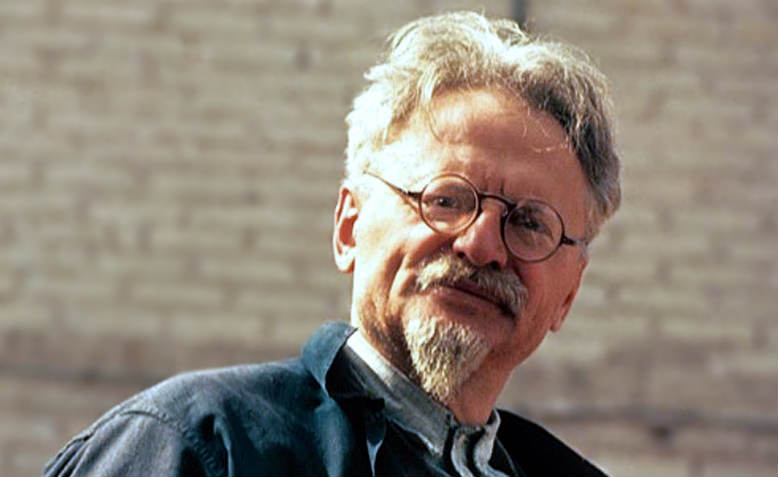 Trotsky in Mexico, 1940. Photo: Wikipedia
Trotsky in Mexico, 1940. Photo: Wikipedia
The exhibition, celebrating Russian art from the revolutionary period, is missing a huge part of the story, argues Judy Cox
I went to the Royal Academy exhibition Revolution: Russian Art 1917-1932 on Saturday. The first room is dedicated to Leadership. Cue large canvasses of Lenin and even more of Stalin. I looked for a likeness of Trotsky and found only one tiny image of Trotsky at Lenin’s side which was enough to get the painting suppressed. I know why the Stalinists wanted to expunge Trotsky from history. They wanted to wipe out memories of the liberation of October 1917. Why would the Royal Academy follow Stalin’s lead in pushing Trotsky out of the frame? Trotsky’s story, from leader of the Red Army to exile and murder, makes it harder to show a continuity between the revolution of 1917 and the horrors of Stalinism and so would disrupt the narrative of this exhibition.
There are some wonderful paintings and artefacts on show at the Royal Academy, some exhilarating glimpses into the new world that many artists sought to help construct – a room recreating a 1932 exhibition of Malevich’s paintings, the dynamism of Kandinsky, the joy of Marc Chagall, the ‘universal flowering’ of Pavel Filonov, powerful clips of film by Eisenstein. Tatlin’s stunning gliders suggest unlimited possibilities. The exhibition gives a very limited idea of how artists put their craft at the disposal of the revolution, using all aspects of design as well as painting to reach the masses. Such politically committed art could never sit easily in the Royal Academy, where a pair of hand-crafted Malevich-themed slippers were on sale for £160.
Perhaps it is expecting too much for an art gallery to give a sense of the social conditions that first generated revolutionary forces and then strangled revolutionary possibilities. The thematic organisation of the displays creates an incoherent and chaotic sense that jumbles together artistic responses to very different stages of the revolution. The commentary suggests that the rapid disappointment of the hopes aroused in 1917 was the result of internal dynamics, isolated from the horrors of the civil war and the failure of the revolution to spread. In the room ‘Eternal Russia’ the exuberant canvasses seem to contradict the commentary which suggests they express nostalgia for the old Russia, ‘disappearing under the boots of the proletarian masses’. The shadow of Stalin looms in every corner, reminding us that after the unlimited possibilities of 1917 came the Gulag. Stalin was not the natural heir of October. He murdered the memory of that revolution. So we can commemorate Lenin and Trotsky and the revolutionary artists of 1917 and celebrate a brief vision of workers’ power in the form of a woman tram conductor, a woman with power over electricity, for centuries the weapon of gods now in the hands of a woman worker.

